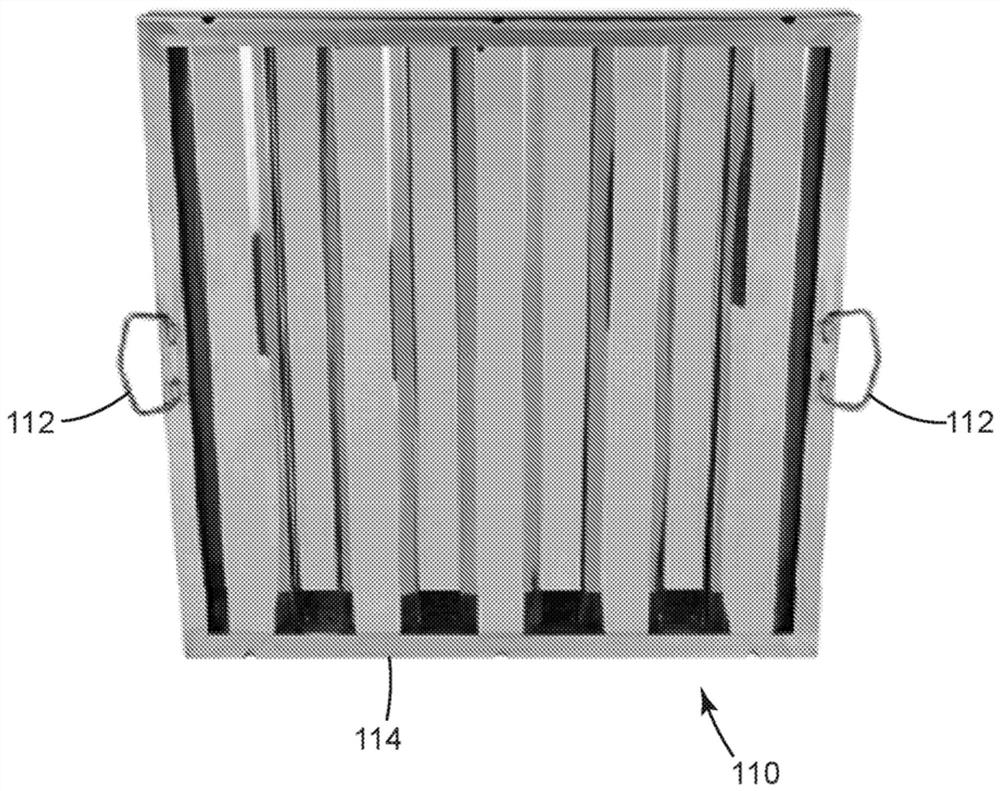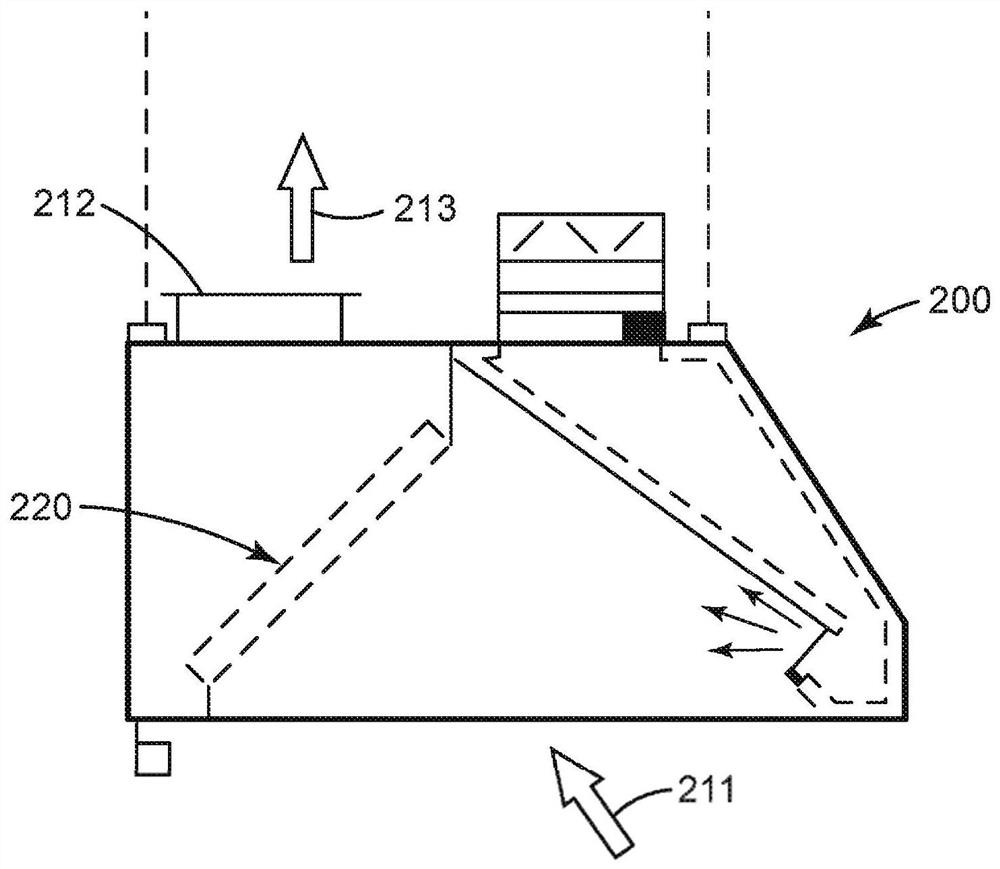Fire-resistant filter
A technology of filter and filter assembly, which is applied in the direction of membrane filter, filtration separation, dispersed particle filtration, etc., and can solve the problems of heavy baffle, insufficient fire resistance, and high cost
- Summary
- Abstract
- Description
- Claims
- Application Information
AI Technical Summary
Problems solved by technology
Method used
Image
Examples
Embodiment 1
[0071] Example 1. Preparation of nonwovens .
[0072] A representative working example airlaid nonwoven web comprising a blend by weight of 70% Fiber 1 and 30% binder fibers was prepared. The web was formed using a conventional airlaid web forming machine (commercially available under the trade designation "RANDO WEBBER" from the Rando Machine Company, Macedon, NY) as the target nominal areal weight In the range of 100 grams per square meter (gsm). Collected fibers formed in the Rando-Webber apparatus were supported on a perforated belt and then collected by winding on a 3" core. The thickness of the resulting web was estimated to be in the range of about 10-20 mm.
[0073] heat set web . The aggregated fibers formed in the Rando-Webber apparatus are supported on a perforated belt and passed through a heating apparatus where hot air (set at 160°C (320°F)) passes from the air side to the belt side (i.e., top to bottom) is drawn through the thickness of the collected fibe...
Embodiment 2
[0081] Example 2. Testing of web fire resistance properties .
[0082] The nonwovens and multilayer webs prepared from Example 1 were tested for their flame resistance properties according to the Bunsen burner flame test. A horizontal ring clamp with an 8 cm diameter opening was attached to the ring stand. An Eisco natural gas Bunsen burner was placed under the ring fixture, and the fixture height was adjusted so that the distance from the fixture to the top of the lamp was 6 cm. A web sample cut to 10 cm x 10 cm was placed on the ring clamp. Create a 10cm long blue flame by measuring from the top of the lamp to the flame tongue. A lit Bunsen burner moves under the sample positioned on the ring fixture. Hold the flame on the sample for 10 seconds. The flame was removed from the sample for 10 seconds, then moved back under the sample / ring clamp for another 10 seconds. The webs that passed this test remained undamaged and the blue flame from the lamp did not penetrate the...
Embodiment 3
[0087] Example 3. UL 1046 Test of Flame Penetration in Flame Tunnel .
[0088] Following the ANSI / UL 1046 Standard, 4th Edition, 2010 (Standard for Grease Filters for Exhaust Ducts), the specific non-volatile oil from Example 1 was tested in a more aggressive flame penetration test. Woven and multilayer webs were tested. Soak single-layer and multi-layer nonwoven webs in an oil bath ( frying oil blend) until saturated. The loose web was then secured between two perforated metal sheets (Grainger, No. 22, 79% open area) and secured into a 20 inch by 20 inch metal frame. The webs were tested for flame penetration using the equipment setup and test method outlined in ANSI / UL 1046. Briefly, grease-soaked filters were loaded into a tunnel and subjected to 4,000 BTU / min from a lit natural gas lamp for 3 minutes under a constant 200 fpm airflow. The passing web must remain undamaged and easily removable, and the flame must not penetrate more than 18 inches with a single flame...
PUM
| Property | Measurement | Unit |
|---|---|---|
| length | aaaaa | aaaaa |
| thickness | aaaaa | aaaaa |
| length | aaaaa | aaaaa |
Abstract
Description
Claims
Application Information
 Login to View More
Login to View More - R&D
- Intellectual Property
- Life Sciences
- Materials
- Tech Scout
- Unparalleled Data Quality
- Higher Quality Content
- 60% Fewer Hallucinations
Browse by: Latest US Patents, China's latest patents, Technical Efficacy Thesaurus, Application Domain, Technology Topic, Popular Technical Reports.
© 2025 PatSnap. All rights reserved.Legal|Privacy policy|Modern Slavery Act Transparency Statement|Sitemap|About US| Contact US: help@patsnap.com



